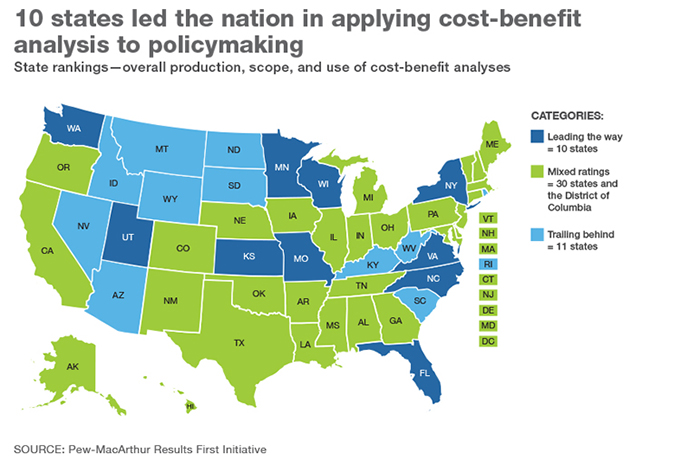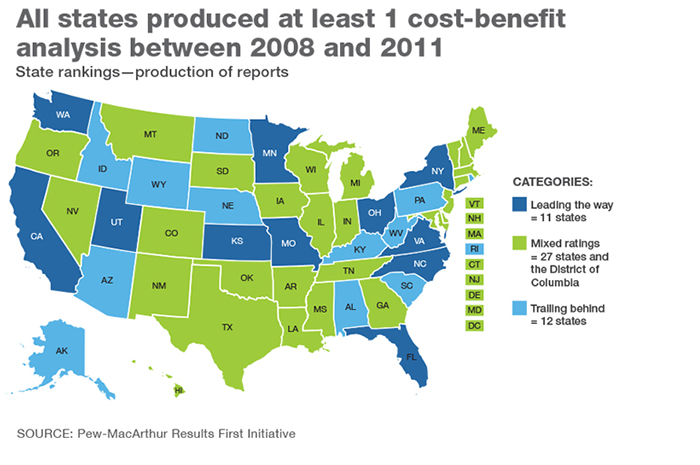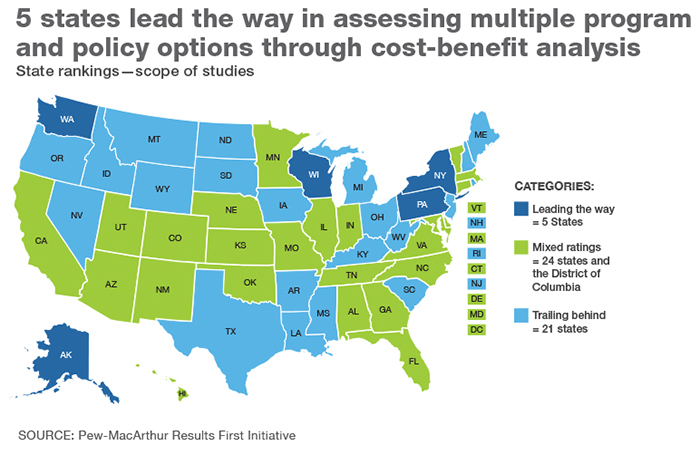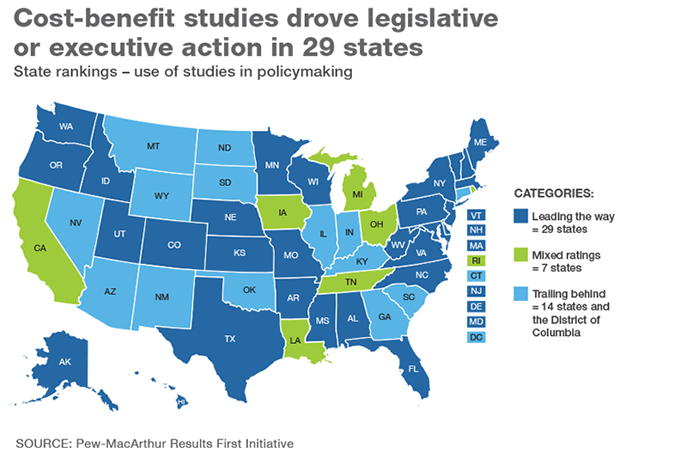States' Use of Cost-Benefit Analysis
Improving Results for Taxpayers
This first-of-its-kind study measures states' use of cost-benefit analysis The approach compares the expense of public programs to the returns they deliver, enabling policymakers to direct limited dollars toward the most cost-effective programs and policies while curbing spending on those that have proven to be ineffective. This report is intended to serve as a resource for policy leaders seeking to expand their use of cost-benefit analysis and as a baseline for future studies of states' progress in using rigorous evidence to better inform tough budget and policy choices.
Overview
Results First's research answers three critical questions:
- Are states conducting cost-benefit analyses?
- Do they use the results when making policy and budget decisions?
- What challenges do states face in conducting and using these studies?
The analysis included a systematic search and assessment of state cost-benefit studies released between 2008 and 2011.
Results First's researchers also conducted interviews with legislative and program evaluation staff, legislators, executive officials, report authors, and agency personnel to better understand the use and influence of cost-benefit analysis in the states.
To derive the report's findings, researchers evaluated states on three criteria:
- The number of cost-benefit studies released per year during the four-year study period.
- Whether these studies assessed multiple program options to compare policy solutions.
- Whether and the extent to which study findings influenced budget and policy decisions.
The three criteria used yielded a baseline assessment of states' commitment to conducting and using cost-benefit analyses. For each criterion, as well as the aggregate of all three, states were ranked as either leading the way, having mixed results, or trailing behind.
The Results First study found:
- 10 states led the way overall in using cost-benefit analysis to generate answers about programs' return on investment and to drive policy decisions, particularly in their largest budget areas. Twenty-nine states and the District of Columbia had mixed results, using cost-benefit analyses but less effectively or consistently, and 11 were trailing behind.

- All states and the District of Columbia conducted cost-benefit studies between 2008 and 2011, but their level of activity varied widely.

- 29 states and the District of Columbia conducted at least some studies that evaluated multiple policy options for making smarter investments of public dollars.

- 36 states reported that at least one of their cost-benefit analyses influenced policy decisions or debate. This included either having a direct impact on budget and policy actions—such as increasing funding for effective programs and cutting or eliminating low-return ones—or more generally initiating and informing public and political discourse about issues. In general, states are not yet utilizing cost-benefit analyses regularly or reliably enough to broadly inform their policy and funding choices.

- Many states face significant challenges both to undertaking studies and to ensuring the appropriate effect on policy and budget choices, but strategies are available to help them use cost-benefit analysis to better ensure that taxpayer funds are used wisely.








